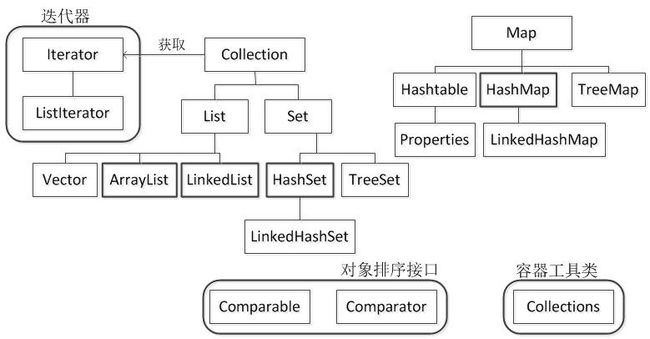一天一个类,一点也不累之TreeSet
一天一个类,一点也不累。
现在要说的是---TreeSet
public class TreeSet<E>
extends AbstractSet<E>
implements NavigableSet<E>, Cloneable, Serializable
说句实话自己没怎么用过这个*_*
--》A NavigableSet implementation based on a TreeMap. The elements are ordered using their natural ordering, or by a Comparator provided at set creation time, depending on which constructor is used.
如上,TreeSet实现了NavigableSet,这就要求元素是按照自然顺序来排序的或者使用Comparator比较器来实现
--》This implementation provides guaranteed log(n) time cost for the basic operations (add, remove and contains).
像上面说的一些基本操作他们的时间复杂度在Log(n)
--》Note that this implementation is not synchronized
还是这句话,他也是非线程安全的。
感谢!!~~ 同样给我们提供了线程安全的方式:
SortedSet s = Collections.synchronizedSortedSet(new TreeSet(...));
【TreeSet的内部实现也是使用TreeMap来实现的】
1、构造方法:
他提供了很多种的构造方法
public TreeSet();
public TreeSet(Comparator<? super E> comparator);
public TreeSet(Collection<? extends E> c)
public TreeSet(SortedSet<E> s)
2、迭代器
是否大家还记得LinkedList提供了一种倒序迭代器。同样TreeSet也提供了。
1 public Iterator<E> iterator() { 2 return m.navigableKeySet().iterator(); 3 }
由于在TreeSet中维护这一个NavigableSet m,所有迭代器的返回只使用了他的KeySet的迭代器。
3、一些特殊的使用方法:
public E first() {
return m.firstKey();
} 获取第一个元素
同样也有获取最后一个元素last()
1 public E lower(E e) { 2 return m.lowerKey(e); 3 }
获取比e小的最接近的元素。
1 public E floor(E e) { 2 return m.floorKey(e); 3 }
获取大于或者等于e的最小元素
与之相对的ceiling
与lower相对的是higher
想要学好这个类首先要了解NavigableSet
